Blog
-
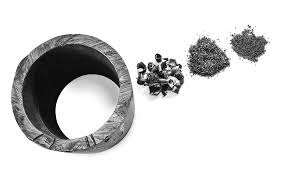
What Is The Meaning Of Hdpe Pipe?
Meaning of HDPE Pipe, In today’s blog, we will discuss about what is the Meaning of HDPE Pipe, its types and many more. Let’s Start.HDPE pipes are a type of thermoplastic polymer pipe that is made from high-density polyethylene. These pipes have gained immense popularity in recent years due to their durability, strength, and flexibility. They are commonly used in a variety of applications such as water supply, gas transportation, and sewage systems.The meaning of HDPE pipe lies in its material properties. High-density polyethylene is a versatile material that can withstand extreme temperatures, making it perfect for outdoor use. It is also resistant to chemicals, making it ideal for transporting hazardous materials. Additionally, HDPE pipes are lightweight, making them easy to transport and install.Read more -
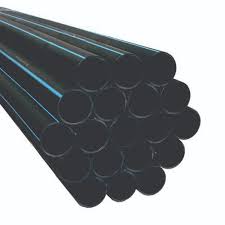
Chapter 1: HDPE History and Background
High-density polyethylene (HDPE) popularity and usage continues to increase. Plastic, particularly HDPE, is part of our everyday lives, from household products to industrial applications. Since its creation almost 70 years ago, HDPE piping and conduit has become a preferred material in the power, communications, and energy industries. HDPE conduit is a flexible and versatile product well-suited for numerous industrial settings. Specific applications include conduit for telecommunications and fiberoptic lines; flowlines for oil and gas; gas transmission and cross-country pipelines; and municipal water and sewer lines.Read more -
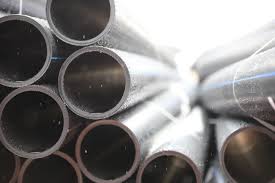
What is HDPE Pipe? | Types and Design of HDPE Pipes
HDPE pipe is a flexible plastic pipe made of thermoplastic high-density polyethylene widely used for low-temperature fluid and gas transfer. In recent times, HDPE pipes got their extensive uses for carrying potable water, hazardous wastes, various gases, slurry, firewater, stormwater, etc. The strong molecular bond of HDPE pipe materials helps it to use for high-pressure pipelines. Polyethylene pipes have a long and distinguished service history for gas, oil, mining, water, and other industries. Due to its low weight and high corrosion resistance, the HDPE pipe industry is growing tremendously. In the year 1953, Karl Ziegler and Erhard Holzkamp discovered high-density polyethylene (HDPE). HDPE pipes can work satisfactorily in a wide temperature range of -2200 F to +1800 F. However, the use of HDPE Pipes is not suggested when the fluid temperature exceeds 1220 F (500 C).Read more -
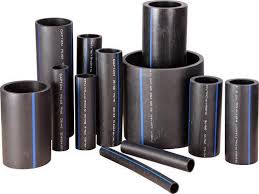 HDPE piping systems, fittings are inherently robust, flexible and resistant to damage caused by external loads, vibrations and pressure fluctuations such as water hammer. Even in cold weather, polyethylene pipe is tolerant of handling and bending.HDPE pipe systems are produced in straight lengths or in coils. Made from materials that are approximately one-eighth the density of steel, they are lightweight and do not require heavy lifting equipment for installation. It reduces the need for fittings, excels in changing floors and performs well in earthquake-prone areas. HDPE resists the effects of freezing and allows bending without the need for an excessive number of fittings. Since HDPE is not a fragile material, it can be easily laid in uninterrupted lengths with bends on rough terrain.Read more
HDPE piping systems, fittings are inherently robust, flexible and resistant to damage caused by external loads, vibrations and pressure fluctuations such as water hammer. Even in cold weather, polyethylene pipe is tolerant of handling and bending.HDPE pipe systems are produced in straight lengths or in coils. Made from materials that are approximately one-eighth the density of steel, they are lightweight and do not require heavy lifting equipment for installation. It reduces the need for fittings, excels in changing floors and performs well in earthquake-prone areas. HDPE resists the effects of freezing and allows bending without the need for an excessive number of fittings. Since HDPE is not a fragile material, it can be easily laid in uninterrupted lengths with bends on rough terrain.Read more -
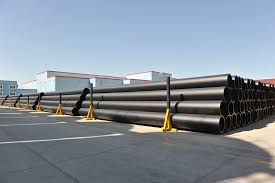
What Are Advantages Of HDPE Pipe Liner?
In HDPE Liner widely uses petroleum thermoplastic. If you look at this plastic under a microscope, you’ll see that it has a straight line with some branches that give it its energy/density ratio. The strong bond of HDPE piping material helps it to use for high-pressure piping. Polyethene pipes have a long and unique history in gas, oil, mining, water, and other industries. HDPE and Epoxy Pipelining both are very durable.Due to its low weight and high corrosion resistance, the HDPE pipe industry is growing rapidly. HDPE pipe liner can perform optimally over a wide temperature range from 2200 f to +1800 f. This pipe is not good for use when the liquid temperature exceeds 1220 f (500 c).Read more -
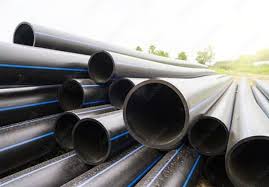 HDPE used to be the plan B pipe material for a project. But, HDPE pipe is now in its fourth generation of development and there has been a paradigm shift in its use worldwide. HDPE is no longer a secondary option for projects big and small, but a necessity. If you work with pipes, or just want to learn everything about HDPE pipes, this is the article for you.Many sectors have historically relied on concrete, metal, and clay for pipe products. However, because of the pressing need to keep production costs down and maintain quality, performance, and efficiency, HDPE pipes have become the preferred material of choice for nearly any project.Read more
HDPE used to be the plan B pipe material for a project. But, HDPE pipe is now in its fourth generation of development and there has been a paradigm shift in its use worldwide. HDPE is no longer a secondary option for projects big and small, but a necessity. If you work with pipes, or just want to learn everything about HDPE pipes, this is the article for you.Many sectors have historically relied on concrete, metal, and clay for pipe products. However, because of the pressing need to keep production costs down and maintain quality, performance, and efficiency, HDPE pipes have become the preferred material of choice for nearly any project.Read more -
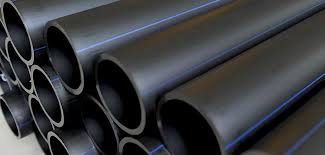 HDPE Pipes are ergonomic plastic pipes that transfer items in various sectors, like water, electrical, irrigation, sewer, and air mains. They are ideal for delivering compressed gases and liquids like wastewater/chemicals, slurries, etc.HDPE pipes are made from a flexible thermoplastic, so they are perfect for replacing damaged steel or concrete pipelines. These pipes are not only impermeable but also have unmatched tensile strength for durability. Furthermore, HDPE pipes are cost-effective, corrosion-resistant, and lightweight.Read more
HDPE Pipes are ergonomic plastic pipes that transfer items in various sectors, like water, electrical, irrigation, sewer, and air mains. They are ideal for delivering compressed gases and liquids like wastewater/chemicals, slurries, etc.HDPE pipes are made from a flexible thermoplastic, so they are perfect for replacing damaged steel or concrete pipelines. These pipes are not only impermeable but also have unmatched tensile strength for durability. Furthermore, HDPE pipes are cost-effective, corrosion-resistant, and lightweight.Read more -
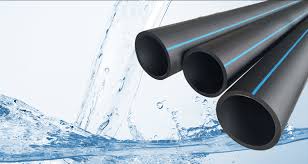
Environmental position of HDPE Pipes
High Density Polyethylene (HDPE) is produced by polymerisation of ethylene typically with another 1-alkene comonomer. Ethylene is produced predominantly by steam cracking of naphtha or lighter feed like ethane.HDPE is used in a variety of applications including: the production of pipes, plastic containers, crates, bottles, caps & closures, industrial wrapping and films.Plastics Europe has recently updated the Environmental Product Declaration (EPD) of HDPE (1).With regard to environmental impact data a direct comparison of different materials is meaningless without taking the specific application into consideration. It is therefore necessary to consider the full life cycle of an application including: production stage, processing stage, utilization and eventually the end of life phase (see following sections).Read more -
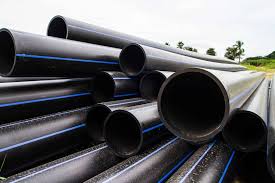
How Long Does HDPE Pipe Last? And Other Frequently Asked Questions
In the world of piping, HDPE pipe is a relatively new addition. While it’s been around for years, some of the older players in the game like copper and cast iron have been around for much longer. You’re likely familiar with the more traditional pipe materials but may still have questions about HDPE pipe. What is HDPE pipe? How long does it last? What are its applications? Keep reading for our answers to all your HDPE pipe questions.Read more -
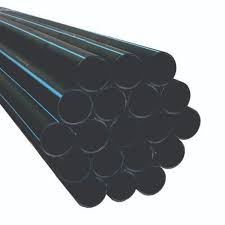
HDPE Pipes; The Perfect Choice for Agricultural Applications
HDPE pipe is a type of flexible plastic pipe used for fluid and gas transfer and is often used to replace ageing concrete or steel mains pipelines. Made from the thermoplastic HDPE (high-density polyethylene. The HDPE is different from the conventional density polyethylene because it has higher molecular weight, and its fabrication can be done by three methods; the Ziegler, Phillips method or ‘gas phase’. Within the family of the polyethylene, the HDPE coexists with the UHMWPE (Ultra High Molecular Weight Polyethylene), which is used to manufacture very resistant fibres, like the ones which are used in the bulletproof jackets, and it is up to 15 times more resistant than the carbon steel before the abrasion.Read more -
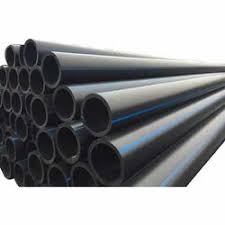 We know a lot about HDPE pipe – the trenchless advocates at Pipe Spy were the driving force behind the change from old clay pipe to HDPE pipe in the approval process by local utility inspectors. We educated the inspectors on the durability of HDPE and on the benefits of HDPE for East Bay property owners – 100+ years of useful life, lower cost, faster sewer repair, and less impact on sidewalks, streets, and property. HDPE is better for our team too – it’s so light, one person can carry a 20-foot section, and it won’t break or hurt someone’s foot if it’s dropped!HDPE is the same substance used in bottle caps, reusable water bottles, plastic lumber, patio furniture, hula hoops….the list goes on. While HDPE products will stay in landfills almost forever without decomposing, that issue is a major benefit for your underground pipes.Read more
We know a lot about HDPE pipe – the trenchless advocates at Pipe Spy were the driving force behind the change from old clay pipe to HDPE pipe in the approval process by local utility inspectors. We educated the inspectors on the durability of HDPE and on the benefits of HDPE for East Bay property owners – 100+ years of useful life, lower cost, faster sewer repair, and less impact on sidewalks, streets, and property. HDPE is better for our team too – it’s so light, one person can carry a 20-foot section, and it won’t break or hurt someone’s foot if it’s dropped!HDPE is the same substance used in bottle caps, reusable water bottles, plastic lumber, patio furniture, hula hoops….the list goes on. While HDPE products will stay in landfills almost forever without decomposing, that issue is a major benefit for your underground pipes.Read more -
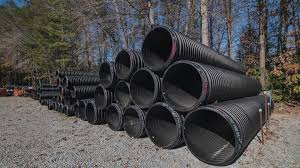
What Are the Differences Between PVC and HDPE?
PVC (polyvinyl chloride) and HDPE (high-density polyethylene) are both versatile thermoplastics used in a wide variety of applications, most notably in plastic piping systems. Though they share some similar characteristics and applications, there are several key differences between PVC and HDPE when it comes to their properties, manufacturing, performance, and uses.Read more

